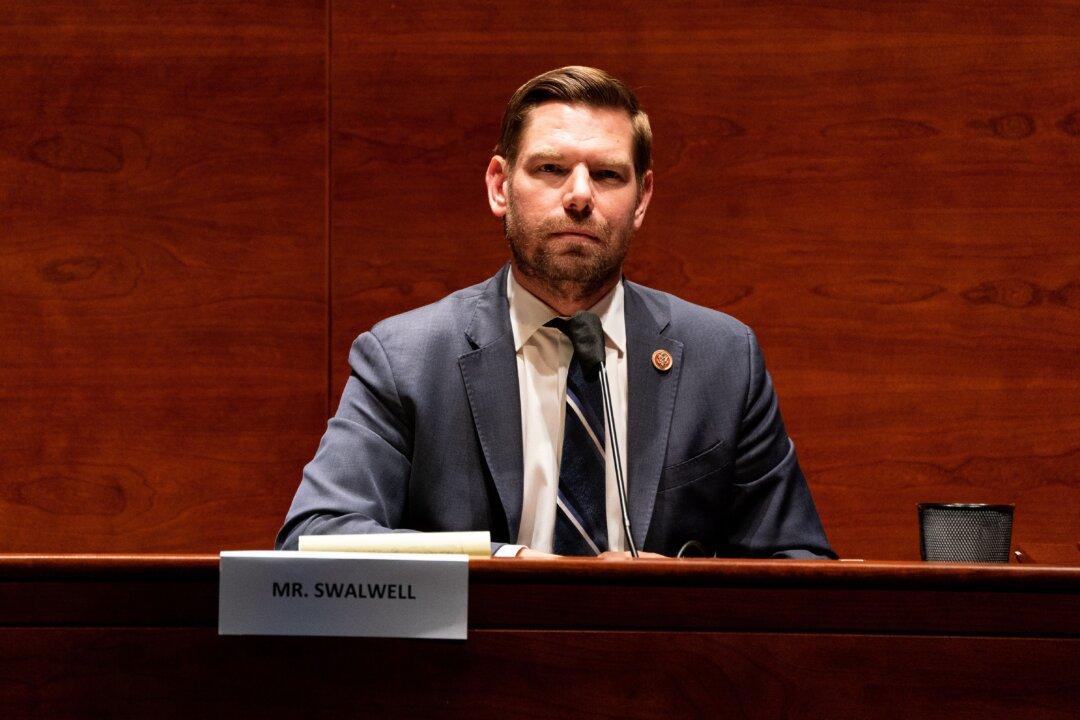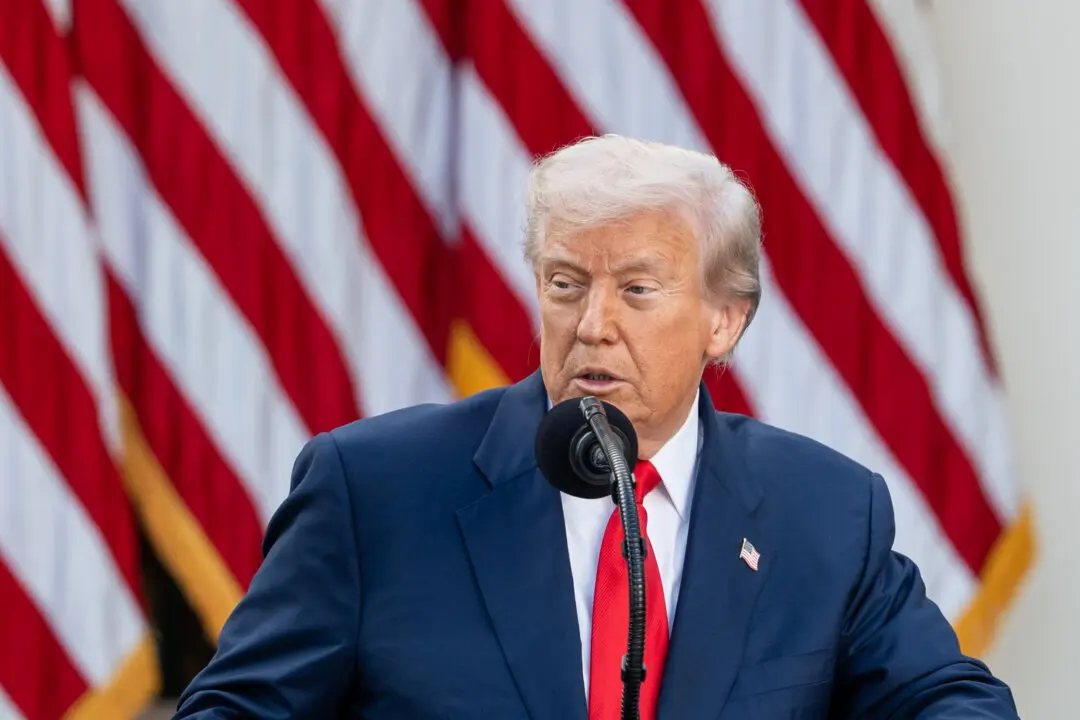Rep. Eric Swalwell (D-Calif.) testified on Oct. 30 in a trial in Colorado in a case that seeks to keep former President Donald Trump from appearing on the Colorado primary ballot.
Mr. Swalwell testified via video conference, describing the events of Jan. 6, 2021, from his perspective. He was in the Capitol when the Electoral College votes were being certified and had “gaveled” the Congress in that day, leading the pledge of allegiance.





